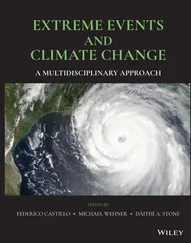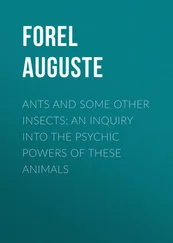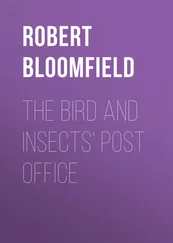This extreme dimorphism (meaning ‘two forms’) has attracted a lot of research from entomologists, and the factors that decide which colour pattern will be produced are now well understood. The final adult morph is decided by the effects of day length and temperature on the feeding caterpillar. Short days and cold, enough to induce winter torpor, produce the spring orange form levana while long hot days produce the black and white summer form prorsa. Experiments have shown that caterpillars from either generation can be raised under artificially altered temperature and daylight regimes to produce the ‘wrong’ adults.
It is still not known why the map butterfly shows such stark changes between its two generations. The scene is further confused by the fact that more northerly and montane populations have only one generation (form levana) each year, while in the south there is a partial third generation with intermediate levana/prorsa characters.
As well as different colour patterns, the summer form prorsa has larger and less pointed wings, a heavier (presumably more muscular) thorax and relatively smaller abdomen. These characters fit the idea that the summer form is better at migrating to colonise new regions (the spring form is noticeably more sedentary), but it still does not explain why one butterfly species should look like two completely different creatures.
| NAME |
twenty-plumed mothsin the genus Alucita |
| LOCATION |
worldwide |
| ATTRIBUTE |
more wings than any other insects |
Adult insects usually have two pairs of wings. Some groups have fewer: flies have only one pair; lice and fleas have none at all. Even beetles, which might look as if they have none at first, still have four wings; two are developed into the hard shell wing-cases, and cover the delicately folded flight wings underneath. But could this be a moth with twenty wings?
Plume moths have long, narrow, hairy wings that resemble birds’ feathers. At rest they fold their wings up tightly to resemble twigs and dead grass stems. In some species the wings are split into hairy fingers, each finger acting as a structural vein to expand the narrow wings into a broader aerofoil in flight. The greatest splitting occurs in the twenty-plume moths, where each of the four ‘true’ wings is divided right down to the base into a fan of finger-wings. Whoever named the moth miscounted. In fact, it has 24 plumes.
The plumes of these moths are analogous to the veins that spread through all insect wings. The veins are most obvious in clear-winged insects such as bees, wasps and flies. Insect wings are thought to have evolved from broad flap-like appendages used as gills by their aquatic predecessors, and the veins are the vestiges of breathing tubes. Such gill flaps are still visible today in the larvae of stoneflies (Plecoptera) and mayflies (Ephemeroptera).
Insects are thought to have evolved wings only once, about 400 million years ago. After examining the different wing structures, scientists now believe that the first truly flapping and flying insects had eight veins in each wing. Over evolutionary time these have often become merged with each other or reduced to six main veins. These six archetypal veins are clearly seen in Alucita.
| NAME |
violin beetlesin the genus Mormolyce |
| LOCATION |
Southeast Asia |
| ATTRIBUTE |
most flattened insect form |
Ground beetles (family Carabidae) are, as their name suggests, usually found running about on the ground, where they hunt small insects and other invertebrate prey. They are found throughout the world and are one of the most diverse and successful groups of insects. Their success is due in part to a peculiar structure near the base of each of their hind legs. The trochanter is a small muscle-filled lobe where the femur (thigh) joins the coxa (hip). It gives the long back legs extra strength, not just to push backwards, but to push downwards at the same time.
Ground beetles use this ability in a technique called wedge-pushing to squeeze into a tight space in the roots of grass or through the soil under a stone. First the beetle pushes its wedge-shaped body forwards as far as it can go, then it levers itself up and down to press back the herbage or soil slightly so it can push forwards again. Using this unique semi-subterranean propulsion method, ground beetles are able to pursue their prey farther and deeper into the dense thatch of plant roots and leaf litter.
The violin beetles – of which five species are known, all from Southeast Asia – have taken this squeezing habit to a bizarre conclusion. Rather than thrusting themselves through the undergrowth, they have chosen another, equally tight, spot in which to hunt: in the narrow crevices beneath the loose bark of dead trees, stumps and logs. As well as an extremely flattened body, violin beetles have a narrow head and thorax to examine minute cracks in the dead timber. They also explore cracks in the earth and the axils of bromeliads.
Most back-to-front insect
| NAME |
apple leaf-miner moth Lyonetia clerkella |
| LOCATION |
Western Europe |
| ATTRIBUTE |
appears to have legs, eyes and antennae at the tips of its wings |
Apple, pear and cherry leaves are prone to attack from the caterpillars of a tiny moth. The caterpillars are so small that rather than eat the leaves from the outside, they burrow along inside them, leaving a winding, pale, air-filled space behind. But what is most remarkable about this insect is that when the adult moth emerges it appears to have its head at the wrong end. Careful inspection of the moth’s tiny 4-mm wings shows that they are entirely white apart from the grey and black marks at their tips. The pattern of dark scales against white is clearly arranged to look like a separate miniature insect, with dark body outline, six legs, two short antennae and two round black eyes.
False eyes, heads and antennae are quite common in butterflies, with many species having prominent dark eye spots at the hind wing edges alongside short or long tails which resemble antennae. Swallowtails unsurprisingly have tails, as do many hairstreaks and blues. Lyonetia is one of a range of micromoths with false legs and heads at the tips of the wings. Some leafhopper bugs, which also have wings folded tent-like over the abdomen, have similar patterns.
Until recently, the conventional wisdom was that false heads attracted the attentions of predators to bite at the relatively expendable wing extremities, preventing fatal damage to the vital organs. However, an intriguing theory suggests that rather than attracting bites to the ‘wrong’ end, the false head at the tail encourages attack on the true head. A predator seeing the moth might reasonably feel its best chance is to sneak up from behind, but it will in reality be making a frontal advance on the insect’s real head, where it is more likely to be detected by the moth’s real eyes and real antennae.
Longest ovipositor (egg-laying tube)
| NAME |
sabre ichneumonin the genus Rhyssa |
| LOCATION |
Europe, North Africa, Asia, North America |
| ATTRIBUTE |
hypodermic-like egg-laying tube longer than the rest of its body |
Ichneumons are related to wasps, but instead of building nests for their larvae, they choose a more insidious lifestyle for their young. Ichneumons lay their eggs in the bodies of other insects, usually moth and butterfly caterpillars, but also insect eggs or pupae. The hatching maggot then eats the host animal alive, from the inside, eventually killing it. An organism that lives on or in a host and kills it in this way is known as a parasitoid.
Читать дальше












